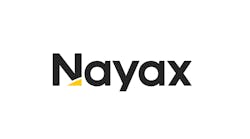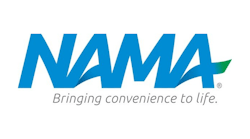By Michael Kasavana and Glenn Butler, Contributing Editors
When was the last time vending technology suppliers worked together to produce an industrywide standard enabling data sharing among competing providers of software products? When was the last time an industry technology standard was created and launched in four months? The answer to both questions was: never!
But in spring 2009, the NAMA technology leadership committee formed a specialized technology task force charged with developing a set of NAMA standards that provide a way to share vending data among competing technology providers. These new standards had to ensure reliability, continuity and longevity.
Reliability relating to each participating technology provider of a vending operator receiving identical data files. Continuity in terms of data retrieval and distribution throughout a vending operator’s network. Longevity will be accomplished by assuring vending operators that interfaces between installed applications and hardware from various suppliers will be supported going forward.
As a result, the task force produced vending data interchange (VDI) standards. These standards contain technical specifications that bundle vending machine-level data for easy distribution throughout a vending operator’s technology network. The standards can be implemented by technology providers without vending operator intervention.
Operators desire technology capable of reliably passing information from one application service provider to another so that multiple application service providers can contribute to a single networked solution. This is the essence of the NAMA VDI standards.
NAMA VDI standards render vending technology capable of linking together diverse software solutions, from different technology providers, in unified applications. The expectation being that NAMA VDI standards represent the tipping point leading to accelerated adoption of vending technologies as many vending operators’ concerns are resolved.
PROTOCOLS FOR MACHINE-LEVEL DATA
NAMA VDI is an innovative set of protocols designed to package machine-level data (e.g., DEX data, alerts data, cashless transaction data, etc.) into a message format that can be shared among diverse supplier systems to enable multiple software applications on the same set of data.
For example, consider the situation in which a telemetry provider remotely polls DEX data from a vending machine. The telemetry provider moves the collected machine-level data file to its server (e.g., Cantaloupe). The server in turn secures the file with a NAMA VDI message wrapper that labels the contents for subsequent communication to any other provider’s server (e.g., Crane Streamware or MEI Easitrax or cashless gateway, etc.) used by the operator.
Alternatively, the operator may have cashless readers installed that are capable of collecting both DEX data and electronic payment data for transmission to hosted software capable of processing DEX data and forwarding cashless transactional data for reconciliation.
Basically, the functionality of the NAMA VDI standards is analogous to an email communication in that the file of machine captured data forms the contents of the email message while the VDI wrapper is equivalent to an email envelope that enables distribution among any number of file servers (email recipients) associated with installed application software, regardless of supplier or manufacturer.
FOR USERS, MORE CONFIDENCE IN TECHNOLOGY PRODUCTS
NAMA VDI standards, for example, allow for DEX data to be transmitted by a telemetry device or server in real time. This provides a platform for an operator’s vending management software (VMS) to upload data nightly for use in pre-kitting and/or dynamic scheduling algorithms.
The goal of NAMA VDI standards is to ensure that a vending operator can confidently implement multiple, diverse vending technology solutions and utilize the operational data in existing application software regardless of supplier.
NAMA VDI specifications are designed to be extensible, uniform, and stable as well as manufacturer and device neutral. In other words, NAMA VDI standards are “open” technology standards.
The Data EXchange standard, DEX, is capable of capturing cash in/out data, product movement data, and audit data. DEX data is designed to assist operators with product replenishment strategies, product mix rotations, and cash management safeguards.
MORE ACCESS TO AND GREATER USE OF DEX DATA
In order to optimize contribution margins while controlling operating expenses, DEX data can play an important role in productivity and profitability improvement. Since standards existed that controlled the collection and storage of data, a data transfer standard (DTS) was devised so that the data could be exported from the machine in a decipherable electronic format. Once the information is transmitted, it can be entered into a VMS and used to determine product mappings, route coverage and sales performance.
The DTS protocol is often considered an integral part of the DEX standard, not a separate element.
A Multi-Drop Bus (MDB) is an internal communication protocol designed to ensure that coin mechanisms, bill validators, and cashless payment devices can be properly interfaced to a vending machine controller (VMC) without regard to proprietary manufacturing. MDB, often compared to USB standards used in generic computer component interfacing, replaces prior practices built on supplier-specific design connectivity.
An MDB cable (also termed a harness) provides the physical connectivity for peripheral devices to the VMC and is part of the movement toward open system architecture in vending technology.
In essence, vending machine-level data capture involves the retrieval of stored audit information (a snapshot) via local or remote transfer. In fact, some telemetry providers actively monitor the MDB bus to detect, in real-time, product sales movement and operational alerts.
Machine-level data formatting and content derivation conforms to the European Vending Association Data Transfer Standard (EVA-DTS) and provides access to status data, testing routines, transaction data and machine setup.
In a typical data connection, a device actively surveys the vending machine for stored data, then follows DTS standards for transmission. Once the data transfer is completed, vending machine-level data can be wrapped in NAMA VDI messaging for subsequent distribution to installed vending application software servers.
OPEN STANDARDS: NON-PROPRIETARY INTERFACES
The purpose of the NAMA VDI standard is to establish transparent, non-proprietary interfaces that enable transportation of data among the main components of a vending system (e.g., vending machine, telemetry system, cashless payment system, specialty applications, and vending management software.) The non-proprietary nature of NAMA VDI renders it an open standard.
NAMA VDI relies on messaging standards to satisfy data interchange needs and is not concerned with the entity transmitting or receiving such messages. For example, a messaging standard governing the transmission of machine-level DEX data may originate from the machine, an advanced telemetry device, or the file server of another. NAMA VDI mandates that message format conform to the technical specifications of the standard, regardless of the entity creating the message.
ELEMENTS OF DATA MESSAGINGThe NAMA VDI Task Force has identified the following seven elements as important to data messaging (interchangeable/exchangeable data files): 1) DEX data messaging — sent or requested captured DEX data file; 2) Alert data messaging — may originate from the VMC, DEX, or MDB depending on telemetry provider; 3) Device status — device configuration and/or service request; 4) Device configuration — sent device configuration and/or status reporting; 5) Security authorization — defines cooperative agreement partners; 6) Machine messaging — reconfigures machine to EVA standards; 7) Device messaging — provides confirmation of download instructions.
The NAMA VDI standard incorporates cooperative agreements among competing vending technology suppliers so that interchanged data will be more meaningfully consumed and effectively applied. Cooperative agreements, often referred to as trading partner agreements, involve written documentation that informs both the sender (producer) and receiver (consumer) of NAMA VDI messages about the specifics of the message(s) being shared. Descriptive elements include such items as: company profile, security authorization, machine identification, location identification, and type of connectivity (server, Web-service, email, etc.).
For example, if provider X is to pass a NAMA VDI data message to provider Y, then the cooperating parties must have transaction information to successfully distribute and utilize the desired data messages. User names, passwords, and Web-based encryption also can be used to help ensure data transfers are secure and accessible by authorized entities.
Seven vending technology providers have volunteered to serve as early adopters of NAMA VDI standards: Cantaloupe Systems, CompuVend, Crane Merchandising Systems, InOne Technology, MEI Group, USA Technologies and Validata.
Early adopters are actively engaged in NAMA VDI standard development and may be directly involved in field testing technical specifications prior to finalization and release of NAMA VDI standards.
Since vending technology historically involves proprietary, company specific data, system integration required expensive and intricate custom programming.
NAMA VDI standards are designed to replace the custom linkages between competing proprietary supplier products, thereby rendering the connectivity as non-proprietary. This is similar to the replacement of specialized train car connectors with non-specialized couplers that enable assembly of the cars in any order of sequence.
STANDARDS TO BE RELEASED IN STAGES
The new NAMA VDI standards are being released in stages based on data messaging developments beginning with 2009 NAMA National Expo in Chicago. Version 1.0 addresses the most critical area among the several data messages identified by the NAMA VDI Task Force: DEX data messaging. It is anticipated that as the remaining data messages are developed, they will be released and labeled in ascending numerical order.
The NAMA VDI standards afford several direct benefits to operators and bottlers, especially those embarking on technology decisions. When purchasing vending technology from a company adhering to NAMA VDI standards, the buyer can be assured that:
- Investment in the compliant technology will be compatible across major suppliers.
- There is no longer a need to rely on the success of a single supplier.
- Multiple telemetry devices will work with a variety of VMS providers.
- Selling or acquiring VDI compatible components simplifies continued operations.
Technology providers have created a tipping point for accelerating the implementation of vending technology. Interest in addressing operator concerns has resulted in unprecedented cooperation among vending technology suppliers to enable harmonic data interchange.
NAMA VDI ensures that operators can feel confident in technology investment, choice of suppliers, and be assured that hardware and software will work together now and in the future.
There has never been a better or safer time to invest in cashless vending, remote machine monitoring, or VMS technology.
NAMA VDI Task Force
Chris Lilly, Best Vendors, chairman
Mike Kasavana, MSU, coordinator
Mary Rampe, MEI, NAMA liaison
Louis Beaudoin, Cantaloupe Systems
Bud Nixon, Canteen Technology Group
Tom Howell, Coca Cola Co.
Ron Hoorman, Coin Acceptors Inc.
Mark Kronenberg, CompuVend
Glenn Butler, Crane Merchandising Systems
Craig Lewis, Crane Merchandising Systems
Gene Ostendorf, InOne Technology
John Cassacia, Masterwork Electronics
Don Finley, MEI
Dan Mathews, NAMA
Don Merchant, Seaga Manufacturing
Cary Sagady, USA Technologies
Billy Irvin, Validata
Warren Philips, Validata
Jeff Mayoras, Wittern Group
About the Authors
Michael Kasavana, Ph.D. is the NAMA endowed professor in hospitality management at Michigan State University in East Lansing, Mich. He has been researching vending technology for several years.
Glenn Butler is vice president and chief technology officer at Crane Merchandising Systems. He can be reached at 781-248-3122 or via email: [email protected].

Michael Kasavana | Ph.D.
Michael L. Kasavana, Ph.D., is the Emeritus NAMA Endowed Professor in Hospitality Business, The School of Hospitality Business at Michigan State University having retired from MSU after nearly four decades of teaching and research. Kasavana holds CHTP (Certified Hospitality Technology Professional) and NCE5 (NAMA Certified Executive) certifications. He remains an active researcher and consultant, focusing on current and near future developments in hospitality-related technologies including: electronic commerce, self-service applications, property management systems, and transaction processing technology. He has also created a series of instructional materials, industry manuals, and software products.
Dr. Kasavana is engaged in innovative and creative solutions for both attended and unattended points of sale for various aspects of the hospitality industry including online and offline, cash and cashless, contact and contactless, physical and virtual data exchange, location-based services, and interchange and merchant fee based digital media. He has conducted extensive research on the impact of technology on hospitality industry productivity, profitability, and competitive advantage and is credited with coining the phrases “V-Commerce”, “V-Engineering”, “Menu Engineering”, and “Auto-Coursing.”
Dr. Kasavana was named the NAMA Industry Person of the Year in 2011 and is a recipient of the MSU Distinguished Faculty Award. In addition, he was inducted into the HFTP International Technology Hall of Fame and was presented the Distinguished Lifetime Achievements Award from FS/TEC for foodservice technology innovation. He has authored, or co-authored, several books, including the industry best-selling texts Managing Front Office Operations (9th edition) and Managing Technology in the Hospitality Industry (7th edition) and has published more than two hundred articles in academic and trade journals.
Dr. Kasavana earned BS (Hotel, Restaurant and Travel Administration), MBA (Finance), and Ph.D. (Management Information Systems) degrees from the University of Massachusetts - Amherst.







